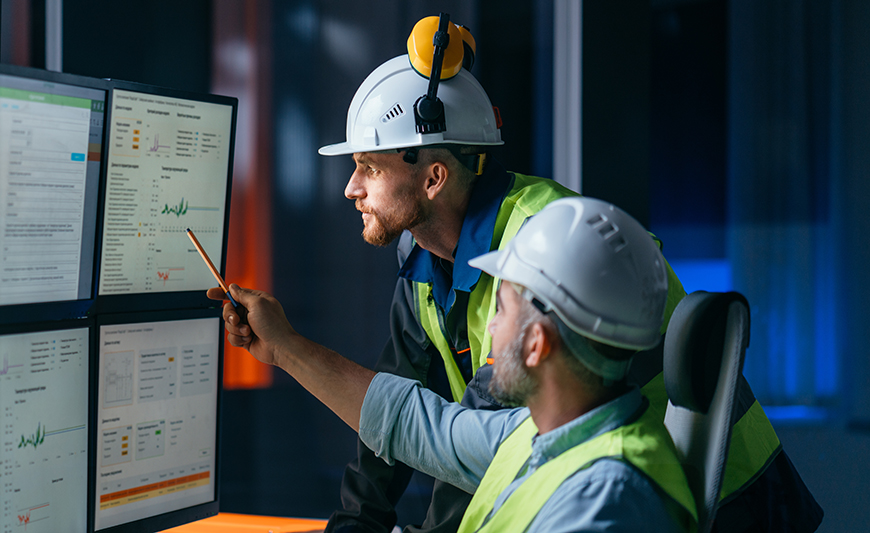
Construction and defect management businesses are always looking for ways to innovate, progress and adapt to trends and changes that may occur within their industry. Ongoing trends include automation, virtual reality (VR) and augmented reality (AR), AI and advanced analytics.
The constant pursuit of a more efficient process that prevents human error and increases productivity has generated trends that could potentially transform the industry.
Leveraging AI and Advanced Analytics
Advanced analytics and artificial intelligence (AI) enable revolutionary new approaches for managing defects. Sophisticated data mining can identify patterns predictive of quality issues. Machine learning algorithms can be trained to flag potential defects.
By tapping into big data, powerful algorithms, and AI, these cutting-edge techniques find needles in the quality haystack. They enable proactive defect discovery and prevention vs. reactive testing and inspection. AI and advanced analytics will be core pillars of next-gen defect management.
Automation
Automation can free up human workers to focus on more skilled and strategic tasks and reduce the number of accidents on construction sites.
Robotics can also help to improve the quality of construction work. Robots consistently produce high quality results, however a word of caution robots are solely reliant on the humans that program them. The integration of robotics largely means fewer defects and rework, saving businesses money in the long run.
VR and AR
Virtual Reality (VR) and Augmented Reality (AR) have the ability to provide their users with valuable insights. AR overlays images in real-time in the existing physical environment, allowing both the construction workers and clients to walk through the final product even before the work itself starts. It also ensures that the building components are installed properly, reducing any expensive mistakes and time fixing the structure over and over again. Another application of AR is that it can be used to train workers about safety procedures.
Greater use of data analytics
Although construction is slowly adapting to a data driven approach, there should be more emphasis on utilising the data from the ever emerging smart construction sites. Data-driven construction helps to create a smart construction site by using the data collected to monitor and manage safety, environmental impacts, and project progress.
Digital construction can also benefit from data-driven practices by providing real-time information on the progress of a project. By being able to track the performance and progress of each phase, smart construction sites are able to identify areas which need to be improved and make necessary changes to increase productivity.
Increasing integration of smart devices and systems
Smart construction, also known as digital or data driven construction, is the integration of smart devices and systems with modern project management techniques to improve site safety, efficiency, and sustainability. Traditional construction practices are manual processes that can be time-consuming and open to human error. Smart construction helps alleviate these issues by providing real-time access to data on the construction site and automated processes to monitor safety, quality, and progress.
Will these trends radically improve the industry?
With every new trend, especially technology, there is likely to be a teething period where the industry is reluctant to change. Implementing new technologies may alienate certain businesses and require slight patience to showcase the undeniable advantages of such technology like smart devices, VR and Automation.
These technologies are likely to transform the construction and defect management industries. Having the ability to inspect large data files, record and collate defects and communicate to multiple parties without mistake is vital.
The retail industry is a prime example of the benefits of integrating automation. According to a recent study by IBM, almost two-thirds of retailers (64 percent) plan to increase their investments in automation over the next three years. In addition, the same study found that the top benefits of automation for retailers include improved customer experience (79 percent), increased operational efficiency (78 percent), and better inventory management (76 percent).
A word from our CEO and co-founder
“As a digital centric business I believe we are at the forefront of most trends, we are extremely adaptable to any feedback or changes within our industry. We are constantly pushing to make all processes more efficient and with reduced human error. We are excited to see how the industry changes over the next five to ten years. With the influx of technology I expect processes to become automated and easier to use.”
Conclusion
As the construction industry is relying on more and more technology to improve their processes and functionality, the defect management side of the industry has to adapt to meet the needs of housebuilders, housing associations, principal contractors, and subcontractors.
The constant need for defect management platforms to improve and adapt to the needs of the housing/construction industry coincides with the appetite for technology such as automation to become the norm.
It is evident that there is a wave of technological advancements that will improve the construction and defect management industry.